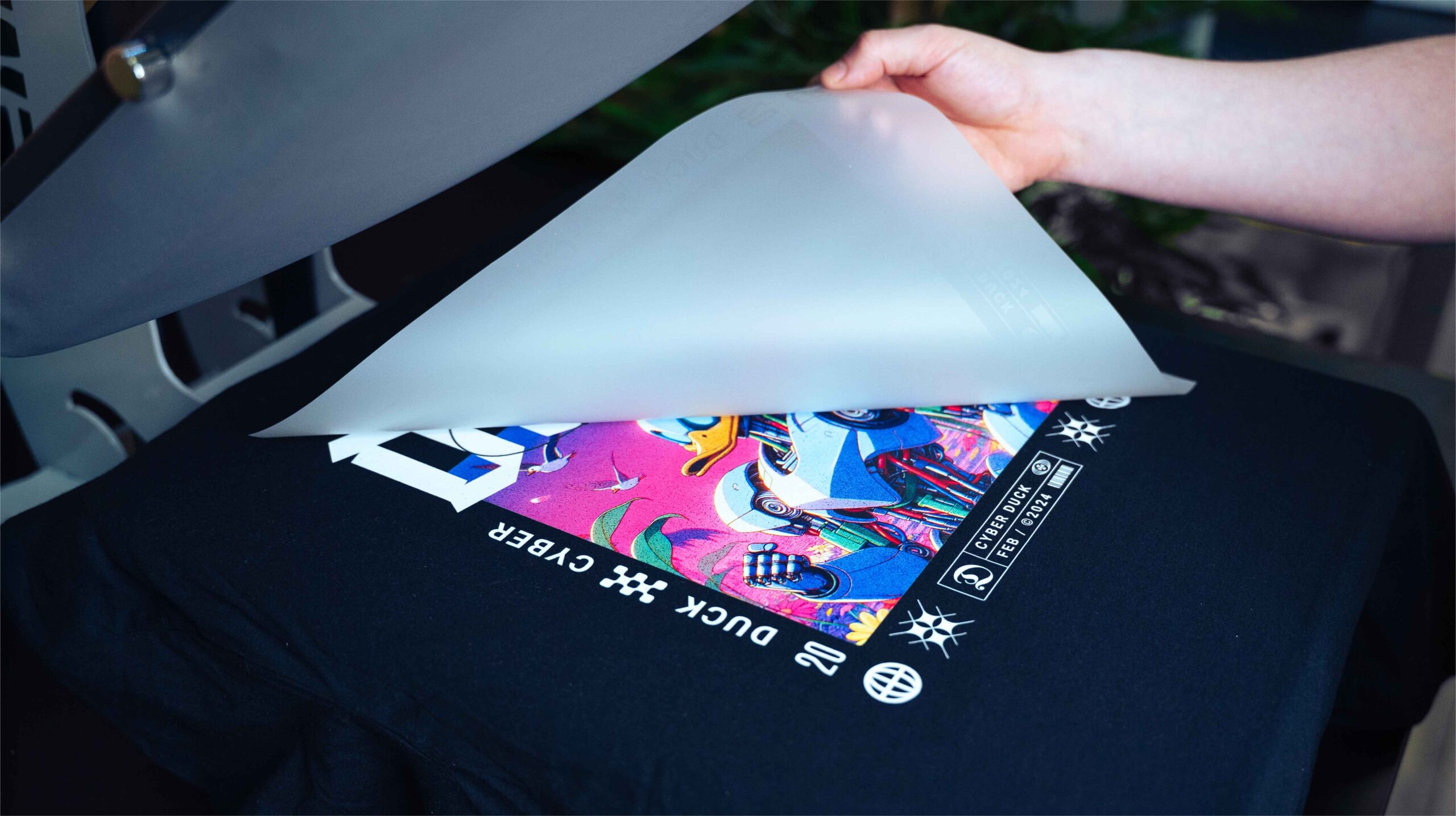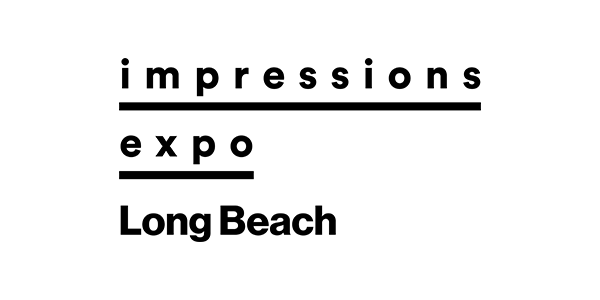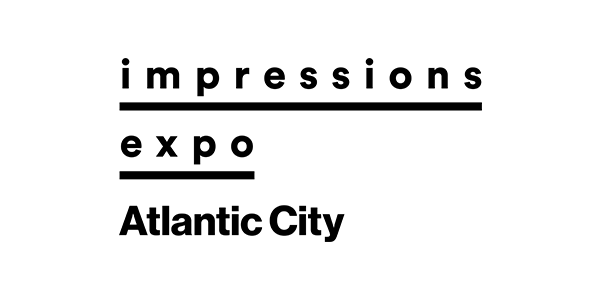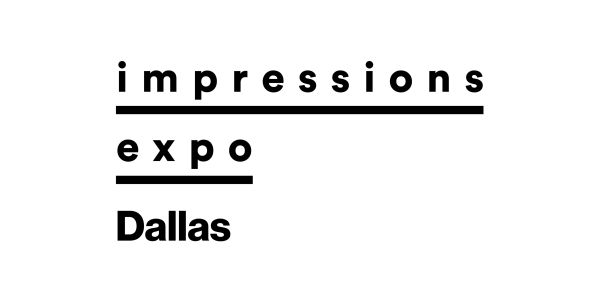A little over a year ago, we sat down with Michael “Ninja Mike” Nemeroff, CEO of custom direct-to-film (DTF) transfer provider Ninja Transfers (ninjatransfers.com), in order to gain some insight into the state of this fast-moving sector of the decorated-apparel industry. Given the speed with which DTF continues to evolve, we thought it only right to check in with Nemeroff once again.
Impressions Magazine: What do you see as the overall outlook for DTF decorating in the coming years? Do you expect to see continued growth? If so, why?
Ninja Mike: One hundred percent! DTF and UV-DTF transfers have exploded in popularity over the last few years, and they’re only gaining steam. What used to be, “Can I even do this?” is now, “How fast can I get it done?” It’s changed the game for decorators, brands and entrepreneurs alike.
DTF gives you superpowers. You can print on nearly any product, material or color with any design without any headaches. Ten designs on 10 different garment types and colors in various locations? No problem. You’re not wasting time figuring out what’s possible anymore—you’re just saying, yes, and that means faster growth, happier customers and more profit. No longer do you need to run the job and costing by an expert. Anyone can do it, because the answer is basically always, yes. It’s a complete mindset shift for the industry.
Advantages to DTF Custom Decorating
IM: Can you provide us with an overview of some of the advantages of DTF decorating over, say, screen printing? How would you compare the costs of screen-printing apparel to DTF?
NM: What’s exciting is that DTF has come so far most customers can’t tell it apart from screen printing—and often it feels even better, especially on performance fabrics, like nylon or polyester.
Screen printing still makes sense for high-volume shops that are optimized for it, but DTF steps in wherever screen printing slows you down. It also requires a far smaller footprint. No giant auto press. No screen reclaiming. Just a heat press, a table, and you’re in business.
The no-minimums part of the equation is also huge. With DTF, you can gang a ton of designs on one sheet and order exactly what you need. That means no wasted money or inventory. Also—and this is big—full color doesn’t cost more. Whether it’s a five-color logo, single color or a photorealistic design, you’re only paying for space, not complexity.
Decorating hard-to-print items like hats, bags or jackets? DTF crushes screen printing. Why spend time with your most talented printer trying to accomplish a single-color screen print on a tricky item when a brand-new employee trained for 30 minutes in DTF can press a full-color DTF transfer for you flawlessly? The answer is: you shouldn’t. If you are still doing it the hard way, I challenge you to give DTF a try on your hardest-to-print product. You’ll be a believer, instantly. I’ll even guarantee it or your money back on your DTF transfers for that order.
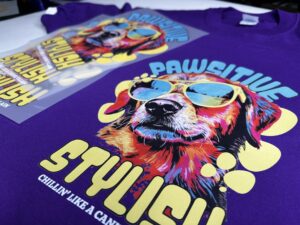
Today’s DTF transfers are good enough they can work just as well or even better than screen printing. Photo courtesy of Ninja Transfers
Sleeve and leg prints are also so easy with DTF. Screen printing on them can be a pain. I know this for a fact having run a screen-printing shop for over 20 years. But with DTF, even multi-color sleeve prints are simple. The more complex the print, the better, because DTF can handle the color and detail with ease without any registration issues.
In terms of cost, if you factor in all the costs, time, risk and space required to run a screen-printing shop—including training printers, prepping orders, ensuring everything is perfect in advance of each print run, then breaking down the screens, and cleaning and reclaiming them—then compare it to DTF, you’d be amazed at the accessibility and ease the latter provides. It is hard to quantify the exact cost difference, but with DTF your costs are well known ahead of time, because you know your cost per transfer. By contrast, with screen printing, your costs can vary greatly as a result of printing problems, having your printers not show up, running low on ink, you name it. Machines can also go down and your shipping costs increase due to production runs taking longer than expected and having to expedite deliveries. This simply won’t happen when DTF decorating, because your timing and the outcomes are so predictable.
When you really break it down—including all the labor, training, screens, risk, rescreens and setup costs that come with screen printing—DTF just makes more sense. It’s faster, easy to learn, more consistent and incredibly scalable. You can quadruple production capacity within the confines of the same space simply by adding more heat presses and tables. It’s that flexible.
Get good at DTF, and your costs will drop fast. Once your team and processes become efficient and you are as confident as we are with DTF, you’ll scale up, and your cost per press will plummet at the same time margins skyrocket.
DTF Custom Apparel and Larger Production Runs
IM: Some say DTF struggles with large production runs. What’s your experience been?
NM: That used to be true, but not anymore. With today’s hot-peel transfers, you don’t have to wait for them to cool—you just press and peel, instantly. A simple heat press gets the job done. As you scale up you can also start investing in dual-platen heat presses, which make it possible to load the next item while the current one is still being pressed. Add a few extra heat presses, and you’ll be cranking out high-volume jobs in no time.
When we started, we saw a lot of one- to 100-piece orders. Now, 500-plus-piece runs are normal. Again, once you dial in your workflow, DTF scales beautifully, way more easily than having to manage an additional screen-printing setup with inks, screens, dryers, reclaim, power washers and so on. Ten heat presses can handle what used to take an entire print shop.
IM: On the custom DTF supplier side of the equation, the industry continues to make great strides in the areas of “feel” and special effects. Can you comment on some of the recent advances being made by both your own company and the industry as a whole?
NM: DTF has gotten way softer, stretchier and more durable. At Ninja Transfers, we’ve tested over 100 combinations of film, ink and TPU powder to get our transfers just right. The result is transfers with a soft matte finish, 60-wash durability when machine drying and over 100 washes line-dried.
The entire industry, Ninja Transfer included, has also begun rolling out a wide range of specialty films, including glitter, glow-in-the-dark, metallic gold and metallic silver. We’ve also added puff transfers to our lineup. These days DTF doesn’t just compete with screen printing, it opens up all kinds of new creative options.
That said it’s important to be aware that not all transfers are created equal. Same goes for custom DTF transfer providers. There are a number of quality custom transfer providers here in the United States—including, of course, Ninja Transfers. However, there are also plenty of no-name outfits out there, whose quality is shoddy to say the least. Bottom line, you get what you pay for. That goes for customer support, quick turnaround times and expedited shipping as well.
Here at Ninja Transfers, we’ve invested over $3 million in building a state-of-the-art facility with precise climate control, top-tier consumables, proprietary software, AI tools and constant testing. Why? Because quality needs consistency. We also test our transfers over 20,000 times a day on real garments across all order types. That kind of real-time feedback gives us a huge edge catching issues before they reach our customers, which in turn ensures your transfers will not have pressing problems. In the event a customer does ever encounter problems or have any questions, we provide 24/7/365 customer service.
In terms of judging the quality of a DTF transfer, the first question you need to ask yourself is, “After it’s washed, does it still look great?” It should. Beyond that, do the transfers peel easily and cleanly every time? You shouldn’t be holding your breath or pulling it at the speed of sound in order to get the design to successfully separate from the transfer. The process should be smooth, satisfying and predictable—hot or cold, fast or slow.
On side note, as with any business, a DTF company’s values and overall business philosophy can also tell you a lot about the products and services it provides, and at Ninja Transfers we always strive to do and be the best we can. As of this summer, for example, our production facility will be 100-percent powered by solar energy. Ninja Transfers’ consumables are also all OEKO Tex Certified, a globally recognized safety standard; the company donates hundreds of thousands of dollars to over 35 not-for-profits, including youth educational programs, the ASPCA and St. Jude Hospital. Ninja Transfers also makes a donation with every order to facilitate carbon-neutral shipping.
IM: Any final thoughts for shops still on the fence about DTF?
NM: If you haven’t tried DTF, now’s the time. I can’t stress enough what a difference it can make. It’s the one solution that works on nearly everything. Once you start, you’ll wish you had sooner.
For more on Ninja Transfers and its complete line of products and services, including DTF transfers, patches, blank apparel and its Ninja Printhouse blind-shipping subsidiary, go to ninjatransfers.com. To see Impressions’ earlier conversation with Ninja Transfers’ “Ninja Mike,” click here.

